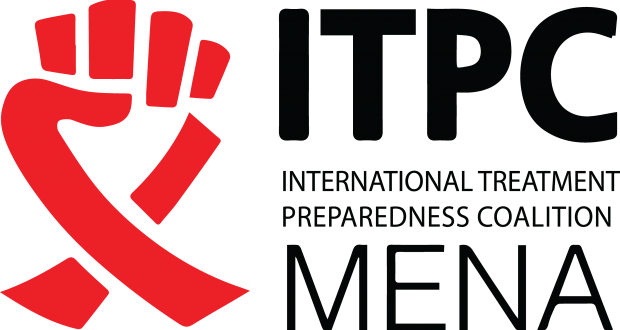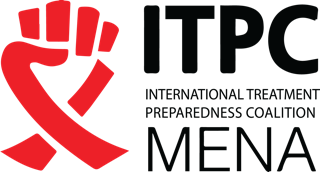
Middle East and North Africa Position Statement on HIV/AIDS to the High-Level Meeting on AIDS
Middle East and North Africa Position Statement on HIV/AIDS to the UN General Assembly Special Session High-Level Meeting on AIDS 6 – 8 June 2016
We, the undersigned communities of the MENA region; regional an d national networks and civil society organizations and representatives of key populations1, youth organizations, PLHIV organizations and groups convened on April 1, 2016 to declare the following positioning on the current HIV situation in MENA. We:
Recall on the previous global and regional commitments:
- 1.The 2001 Declaration of Commitment on HIV AIDS and the 2006 and 2011 Political Declarations on HIV/AIDS and the urgent need to signi ficantly scale up efforts towards comprehensive prevention programs, treatment, care and support;
- 2.The 2001 Doha Declaration of The World Trade Organization (WTO) on TRIPS (Trade-Related Aspects of Intellectual Property Rights) agreement and public health;
- 3.The Cairo Declaration of Religious Leaders in the Arab States in Response to the HIV/AIDS Epidemic (2004);
- 4. Joint United Nations Programme on HIV and AIDS (UNAIDS) strategy (2016-2021);
- 5. The Global WHO HIV/AIDS Strategy (2016);
- 6. The 2011 statement of commitment on the implementation of the International Labour Organization R200 recommendation from Mashreq countries;
- 7. UN Security Council Resolution of 1983 on addressing HIV in conflict and post-conflict settings;
- 8.The Regional Arab AIDS Strategy to Fight AIDS (2014 – 2020) that was endorsed by the Arab Council of Ministers of Health in 2014;
- 9. The ministerial resolution that urges Arab countries to fast-track national responses to end AIDS by 2030 as part of Sustainable Development Goals and accelerate their efforts for the implementation of the Arab AID S Strategy (2014-2020) that was endorsed by the Council of the Arab Ministers of Health at its 45th Ordinary Session in Cairo on 3 March 2016.
Acknowledge
- 10.That HIV and AIDS constitute a global emergency and create challenges to the development, progress and stability of our societies; therefore HIV and AIDS should be considered as a Global priority crosscutting the seventeen Sustainable Development Goals;
- 11. The excellent opportunity presented by the HLM to define, jointly with stakeholders, the next years agenda, towards achieving the commitment of ending the AIDS epidemic by 2030;
- 12. The role of UN Agencies, in fast-tracking the HIV and AIDS response and for putting the rights of PLHIV and Key Populations at the centre of the AIDS response;
- 13. The increased political commitment among MENA countries to strengthen efforts in the AIDS response through endorsing global and regional commitments and declarations on scaling up HIV prevention, treatment, and care;
- 14. The efforts undertaken by the League of Arab States and UNAIDS in developing the Arab AIDS Strategy in coordination and in consultation with Civil Society Organizations and Key Populations and especially with the MOU between the League and the Regional/Arab Network Against AIDS (RANAA) on the role of CSOs in the implementation of the Arab AIDS Strategy;
- 15. That most MENA countries have developed national HIV and AIDS strategies, in line with the Arab AIDS Strategy, that support free treatment and care programmes for people living with HIV, and include access to prevention services for all key populations and include other key sectors. In addition to, an increase in HIV research studies and improved information systems and surveillance where it is lacking;
- 16. That social work ethics are the basis in responding to HIV;
- 17. That the Arab AIDS Strategy is primarily based on the principle of shared responsibility and regional solidarity among Arab countries.
Feel concerned
- 18. That while the number of people newly infected with HIV continues to decrease worldwide, this number has increased by more than 62% since 2001 in the Middle East and North Africa;
- 19. That an average of 82% of People Living with HIV are not accessing ARVs in the region;
- 20. By the low rate of coverage of HIV Mother to Child Transmission prevention that doesn’t exceed 18% in most countries in the region;
- 21. By promoting ending AIDS by 2030 without concrete financial plans to support this agenda, especially through domestic resources, MENA region may be facing an outbreak of the virus;
- 22. About the increase in the incidence rate among partners of Key Populations in many countries of the region;
- 23. By the high level of stigma and discrimination especially again st Key Populations and PLHIV without considerations of social work ethics;
- 24. By the restrictions on travel, transportation, employment, and residence for people living with HIV in the region;
- 25. About the difficulty for Key Populations, especially adolescents, women and girls, in accessing HIV continuum of care services and information;
- 26. By the humanitarian crisis increasingly affecting the MENA region and posing a considerable challenge since it is becoming to be the world’s largest producer and host of forced displacement. With the on-going conflicts, the number of refugees and internally displaced people has risen to unprecedented levels, which leads to serious stretching of health facilities in the in hosting countries;
- 27. About the disruption of services and stock outs of ARVs especially in countries affected by the conflict;
- 28. By the de-prioritization of HIV in MENA. Civil Society Organizations in this region are facing difficulty in sustaining existing programs, as HIV and AIDS are no longer seen as a priority in the region due to other emerging concerns;
- 29. By more countries becoming illegible to the Global Fund grants, while national response remain highly dependent on external support;
- 30. By the lack of investment, particularly domestic investments in prevention programmes among key populations and social protection for people living with HIV within the HIV response;
- 31. By the limited evidence informed based interventions for key po pulations, specifically, youth and women, due to limited and disaggregated data;
- 32. By patents and other intellectual property rights that constitute major barriers to access newer generations of ARVs in MENA region;
- 33. By the exclusion of the majority of MENA countries from pharmaceutical companies access programs and voluntary license signed by the Medicines Patent Pool.
Strongly recommend:
The Middle East and North African Governments: Within the Framework of Political Commitment to:
- 1. Develop domestic funding mechanisms and strengthen local investment especially partnerships among the private sector for the HIV national response;
- 2. Develop monitoring and evaluation mechanisms towards achieving the Sustainable Development Goals with clear set targets and indicators addressing HIV and AIDS response in line with the Arab AIDS Strategy (2014– 2020);
- 3. Commit to engage and coordinate national efforts among ministries, central governments, private sector, civil society organizations, community representatives, and municipalities in the implementation of the national strategies on AIDS;
- 4. Adopt and include national strategies on harm reduction for injecting drug users within the national strategies on AIDS;
- 5. Integrate HIV within other health and development priorities including Hepatitis, TB, SRH Services, and social protection schemes;
- 6. Remove patents and other intellectual property barriers, if any, to ensure access to generic versions of the new anti-retroviral drugs at affordable prices and advocate for local manufacturing of ARVs if possible.
Within the framework of implementation of Fast Track Targets related to scaling up treatment and prevention, and fighting stigma and discrimination to:
- 1. Partner with civil society organizations, key population, PLHIV, and activate their critical role in outreach, prevention, treatment and care within the WHO treatment guidelines and the 90-90-90 targets, while ensuring gender equity and equality;
- 2. Set policies and provide services towards elimination of Mother to Child Transmission and provide proper ARV treatment and care for children living with HIV;
- 3. Increase free and sustained coverage for quality treatment and related testing services for all PLHIV and key populations;
- 4. Increase investment in innovative prevention programs aligned to young people needs including comprehensive sexual education, and support building and strengthening the capacity of service providers and civil society organizations in service delivery;
- 5. Develop advanced research and increase generating strategic information for effective evidence based HIV programs in the region to maximize their impact;
- 6. Integrate refugees in existing HIV/AIDSs prevention, treatment and care services within existing national and humanitarian response, with particular focus on women and girls;
- 7. Build partnerships with humanitarian organizations to provide HIV prevention and care services for migrants and displaced people in the countries concerned;
- 8. Review laws and policies that adversely affect the successful and effective implementation of programs of HIV prevention, treatment, care and support for key populations and people living with HIV;
- 9. Increase partnership between health and social sectors, and net working with media, judiciary, parliamentarians, religious leaders, and law enforcement agencies in the adoption of joint initiatives and practices to combat stigma and discrimination against people living with and affected by HIV.
The League of Arab States to:
- 1. Support the ratification of the Arab Convention for the rights of people living with HIV;
- 2. Increase networking among ministries, within the multi sectorial principle, in the implementation of the Arab strategic plan;
- 3. Activate the memorandum of understanding with the Regional/Arab Network Against AIDS around the pivotal role of civil society organizations in the implementation of the Arab strategy for AIDS;
- 4. Strongly advocate for the Arab AIDS Strategy principle of shared responsibility and regional solidarity and South-South technical support and funding among Arab Countries ;
The International Development Partners to:
- 1. Acknowledge the MENA region’s specificity in being a region with an increase in new infections despite a low prevalence and in line with an exacerbated current humanitarian crisis;
- 2. Advocate for the Middle East and North Africa region to be placed on the Global radar and demand that the UN ensure a seat for NGOs of this region at the UNAIDS Programme Coordinating Board;
- 3. Work towards a more effective communication and coordination mechanism between the various international partners and donors to mobilize resources and support the implementation of the MENA priorities in line with the SDGs;
- 4.Revisit their country and regional eligibility criteria to be in line with the later specificities and needs, this recommendation applies to all donors and especially the Global Fund.
We, the undersigned, commit ourselves to a full partnership with the Middle East and North Africa Governments, the League of Arab States, and all international development partners in achieving the recommendations of this document towards our common goal of ending HIV/AIDS by 2030 in MENA.
Arab Foundation for Freedoms and Equality (AFEMENA)
FHI360 / Network of Associations for Harm Reduction Project (NAHR)
Global Network of young people Living with HIV (Y+)
Global Youth Coalition on HIV/AIDS (GYCA)
International Treatment Preparedness Coalition – MENA (ITPC-MENA)
M-COALITION
MENAROSA
Middle East and North Africa Network of/for People who use Drugs (MENANPUD)
Middle East and North Africa Harm Reduction Association (MENAHRA)
Regional/Arab Network Against AIDS (RANAA)
Click to see the position statement Here









